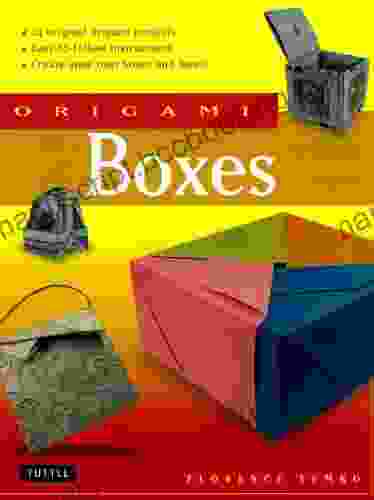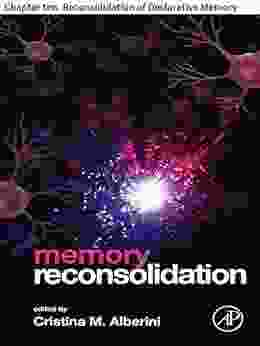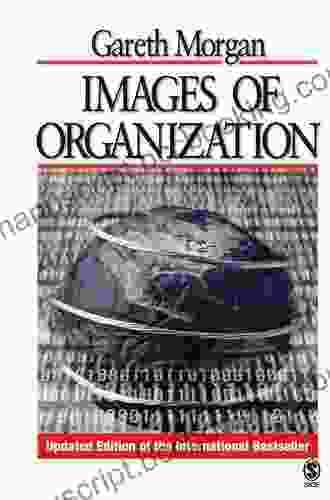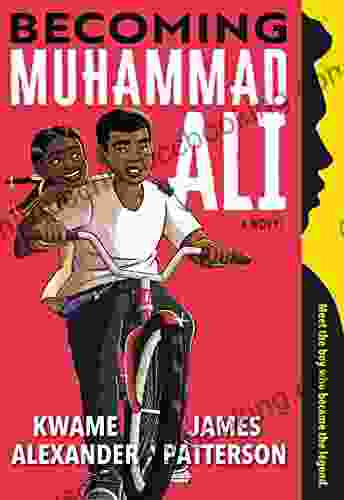Memory Reconsolidation Chapter Ten Reconsolidation Of Declarative Memory

4.7 out of 5
| Language | : | English |
| File size | : | 506 KB |
| Text-to-Speech | : | Enabled |
| Screen Reader | : | Supported |
| Enhanced typesetting | : | Enabled |
| Print length | : | 26 pages |
Memory reconsolidation is a process that allows previously consolidated memories to be modified or updated. This process is thought to be important for learning and memory, as it allows us to correct errors in our memories and to adapt to new information.
In Chapter Ten of the book Memory Reconsolidation, the authors provide a comprehensive overview of the research on memory reconsolidation, including the latest findings on the mechanisms and functions of this process. The chapter begins with a brief to the concept of memory reconsolidation, followed by a discussion of the different methods that have been used to study this process. The authors then review the evidence for memory reconsolidation in both animals and humans, and they discuss the implications of this research for our understanding of learning and memory.
The authors conclude the chapter by discussing the future directions of research on memory reconsolidation. They argue that future research should focus on identifying the specific mechanisms that are involved in memory reconsolidation, and on understanding the role of this process in learning and memory. They also call for more research on the clinical implications of memory reconsolidation, such as the potential use of this process to treat memory disFree Downloads.
The Mechanisms of Memory Reconsolidation
The mechanisms of memory reconsolidation are still not fully understood, but research has identified a number of key steps in the process. The first step is the reactivation of the memory trace. This can be triggered by a variety of factors, such as exposure to the original stimulus or to a related stimulus. Once the memory trace has been reactivated, it becomes labile, or susceptible to change. This lability is thought to be due to the fact that the memory trace is being重新巩固, 或者重新存储在脑海中。
The second step in memory reconsolidation is the incorporation of new information into the memory trace. This can occur through a variety of mechanisms, such as the formation of new associations between the memory trace and other information in the brain. Once new information has been incorporated into the memory trace, the memory is said to be reconsolidated.
The third step in memory reconsolidation is the restabilization of the memory trace. This process involves the formation of new protein synthesis and the strengthening of existing synaptic connections. Once the memory trace has been restabilized, it is thought to be resistant to further change.
The Functions of Memory Reconsolidation
Memory reconsolidation is thought to have a number of important functions, including:
- Error correction. Memory reconsolidation allows us to correct errors in our memories. This can occur when we are exposed to new information that contradicts our existing memories. When this happens, the memory trace is reactivated and new information is incorporated into the memory. This process can lead to a more accurate representation of our past experiences.
- Updating. Memory reconsolidation allows us to update our memories to reflect new information. This can occur when we learn new information that is related to our existing memories. When this happens, the memory trace is reactivated and new information is incorporated into the memory. This process can lead to a more comprehensive understanding of our past experiences.
- Adaptation. Memory reconsolidation allows us to adapt our memories to new situations. This can occur when we experience a new situation that is similar to a past experience. When this happens, the memory trace is reactivated and new information is incorporated into the memory. This process can lead to a better understanding of how to应对新情况.
The Implications of Memory Reconsolidation for Learning and Memory
The research on memory reconsolidation has a number of important implications for our understanding of learning and memory. First, the research suggests that memories are not static, but rather can be modified or updated throughout our lives. This finding challenges the traditional view of memory as a permanent record of our past experiences.
Second, the research on memory reconsolidation suggests that learning is not simply a matter of acquiring new information, but also involves the modification and updating of existing memories. This finding highlights the importance of creating learning experiences that allow students to actively engage with and reflect on their prior knowledge.
Third, the research on memory reconsolidation has implications for the treatment of memory disFree Downloads. For example, the research suggests that it may be possible to use memory reconsolidation to improve memory function in people with Alzheimer's disease. This is an exciting area of research that has the potential to lead to new treatments for memory disFree Downloads.
Memory reconsolidation is a complex process that is still not fully understood. However, the research on memory reconsolidation has provided important insights into the nature of memory and its role in learning. This research has also has implications for the treatment of memory disFree Downloads. As research on memory reconsolidation continues, we can expect to gain a better understanding of how memories are formed, stored, and retrieved. This knowledge will have important implications for our understanding of learning and memory, and for the treatment of memory disFree Downloads.
References
- Dudai, Y. (2012). Reconsolidation: The advantage of being revised. Progress in Neurobiology, 98(2),137-146.
- Nader, K., & Hardt, O. (2009). A single standard for memory: The case for reconsolidation. Nature Reviews Neuroscience, 10(3),174-180.
- Przybyslawski, J., & Sara, S. J. (2014). Memory reconsolidation: A tale of two forms. Trends in Neurosciences, 37(11),662-672.
4.7 out of 5
| Language | : | English |
| File size | : | 506 KB |
| Text-to-Speech | : | Enabled |
| Screen Reader | : | Supported |
| Enhanced typesetting | : | Enabled |
| Print length | : | 26 pages |
Do you want to contribute by writing guest posts on this blog?
Please contact us and send us a resume of previous articles that you have written.
 Book
Book Novel
Novel Page
Page Chapter
Chapter Text
Text Story
Story Genre
Genre Reader
Reader Library
Library Paperback
Paperback E-book
E-book Magazine
Magazine Newspaper
Newspaper Paragraph
Paragraph Sentence
Sentence Bookmark
Bookmark Shelf
Shelf Glossary
Glossary Bibliography
Bibliography Foreword
Foreword Preface
Preface Synopsis
Synopsis Annotation
Annotation Footnote
Footnote Manuscript
Manuscript Scroll
Scroll Codex
Codex Tome
Tome Bestseller
Bestseller Classics
Classics Library card
Library card Narrative
Narrative Biography
Biography Autobiography
Autobiography Memoir
Memoir Reference
Reference Encyclopedia
Encyclopedia Imre Lakatos
Imre Lakatos Peter Hanson
Peter Hanson F William Lawvere
F William Lawvere Mitchell Stephens
Mitchell Stephens Keiko Kasza
Keiko Kasza Kevin Pereau
Kevin Pereau Etgar Keret
Etgar Keret Giorgia Crimi
Giorgia Crimi Joynell Schultz
Joynell Schultz Eugene C Toy
Eugene C Toy Monika Chang
Monika Chang Ted Mckinney
Ted Mckinney Patrick Herrendorf
Patrick Herrendorf Colton Dubell
Colton Dubell Steve Moore
Steve Moore Scotto Moore
Scotto Moore Scott Keyes
Scott Keyes Michael Pettis
Michael Pettis Rachna Bhola Yamini
Rachna Bhola Yamini Peter L King
Peter L King
Light bulbAdvertise smarter! Our strategic ad space ensures maximum exposure. Reserve your spot today!

 Ronald SimmonsPrisoners by Jeffrey Goldberg: An Unforgettable Journey into the Lives of...
Ronald SimmonsPrisoners by Jeffrey Goldberg: An Unforgettable Journey into the Lives of... Julio CortázarFollow ·7.8k
Julio CortázarFollow ·7.8k Ricky BellFollow ·5.6k
Ricky BellFollow ·5.6k Thomas MannFollow ·6.8k
Thomas MannFollow ·6.8k Gary CoxFollow ·13.3k
Gary CoxFollow ·13.3k Derek BellFollow ·9.8k
Derek BellFollow ·9.8k Richard AdamsFollow ·14.4k
Richard AdamsFollow ·14.4k Warren BellFollow ·5.2k
Warren BellFollow ·5.2k James JoyceFollow ·8.7k
James JoyceFollow ·8.7k

 W.H. Auden
W.H. AudenStep into a World of Thrilling Deception: Don Blink by...
Unveiling the Masterpiece of Suspense:...

 Jaylen Mitchell
Jaylen MitchellUnleash Your Creativity with "This Easy Origami": A...
: Embark on an Enchanting Voyage into the...

 Vladimir Nabokov
Vladimir NabokovEmpowering Home Births: A Comprehensive Guide for Fathers...
An In-Depth Exploration of Paternal...

 Juan Rulfo
Juan RulfoThe Maya Exodus: Indigenous Struggle for Citizenship in...
The Maya Exodus: Indigenous Struggle for...

 Julio Ramón Ribeyro
Julio Ramón RibeyroKana Made Easy: Dive into Japanese the Fun and Effortless...
Unveiling the Secrets...
4.7 out of 5
| Language | : | English |
| File size | : | 506 KB |
| Text-to-Speech | : | Enabled |
| Screen Reader | : | Supported |
| Enhanced typesetting | : | Enabled |
| Print length | : | 26 pages |












